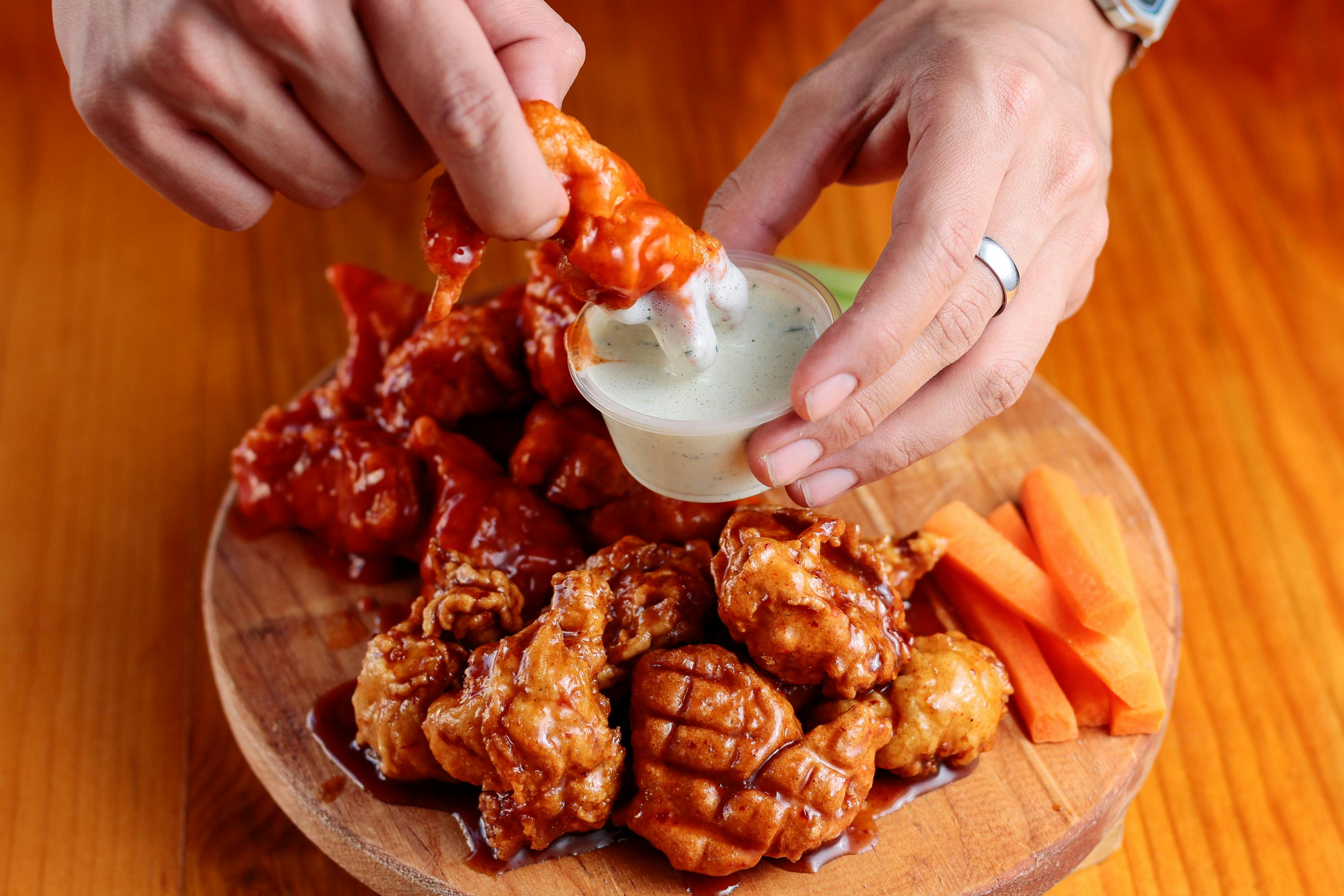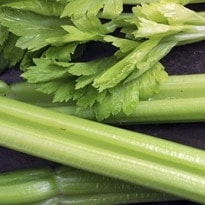While punchy flavour and refreshing juicy crunch make celery a heavy-hitter in the salad department, there are many more uses to this overlooked vegetable than just sticking it in a dip. If raw celery is brash, soft-cooked celery is subtle, yielding sophisticated flavours like those of the classier artichoke and asparagus. A silky celery soup, for instance, takes some beating. It's also an indispensable ingredient in the aromatic Italian soffritto and French mirepoix mixes that provide the flavour springboard for so many classic dishes. Whether you're eating celery raw or cooked, it's worthwhile running a potato peeler along the stalks to remove those irritating fibrous threads.
Why is celery good for me?
Modern scientific studies confirm celery's folk medicine profile for lowering blood pressure. This may be due to its potassium content, and the presence of phthalides, compounds that relax muscles around arteries. Coumarin, another antioxidant in celery, appears to enhance the activity of white blood cells. Celery has a diuretic effect, so it can play a role in eliminating excess body fluid. In many countries, it is recommended as a cleansing vegetable with tonic properties. Hippocrates, the father of medicine, wrote that celery could be used to calm the nerves, and it also has a history of usage in treating nervous disorders.
Where to buy and what to pay
Buy whole heads (guide price 50p‑£1.39 each) and do your own easy trimming: you'll pay a premium for preprepared hearts and sticks. From now until Christmas, look out for leafy white celery from the Cambridgeshire Fens. It's grown in the traditional manner, earthed up in trenches to blanch the stalks, so it develops a lovely nutty taste.
Joanna Blythman is the author of What To Eat (Fourth Estate, £9.99). To order a copy for £7.99 with free UK p&p, go to theguardian.com/bookshop
Jugged celery with bacon, apples and almonds
A wonderful accompaniment to a roast gamebird, duck or chicken, this dish is based on an old recipe where the sticks would be braised standing up in a jug. I have adapted it to be more practical. Serves 4
1 tbsp oil
160g smoked streaky bacon, cut into 3cm pieces
1 large onion, peeled and thinly sliced
2 small English apples, peeled, cored and thinly sliced
1 head celery, trimmed, peeled to get rid of stringiness and cut into 8cm pieces
20g butter
Salt and black pepper
200ml chicken or veg stock
1 small handful flatleaf parsley, leaves picked and finely chopped
45g flaked almonds, toasted
1 Heat the oil in a heavy-based pan. Add the bacon and fry until it has let off its fat. Lift the pieces out with a slotted spoon and set aside. Add the onions and cook for 8 minutes over a medium heat, until beginning to soften, then add the apple and cook for a further couple of minutes.
2 Add the celery and continue to fry for 5 minutes more, or until everything is slightly browned at the edges. Add the butter, season with salt and pepper.
3 Pour in the hot stock, return the bacon and place a lid on the pan. Turn the heat down and simmer for 20 minutes, until the vegetables are almost tender, then take the lid off and increase the heat to medium and continue to simmer till the liquid has reduced and become slightly syrupy, which takes about 5 minutes. Stir in the parsley and almonds and serve.
Rosie Sykes is head chef of Fitzbillies and co-author of The Kitchen Revolution (Ebury Press, £25). To order a copy for £19.99 with free UK p&p, go to theguardian.com/bookshop
Photo: Celery is great for lowering blood pressure and has long been used as a diuretic. Photograph: Jill Mead for the Guardian








